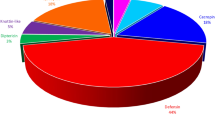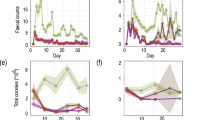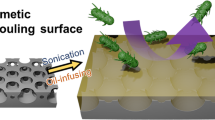Abstract
MILLIPEDES lay their eggs in hollow capsules of their own construction, within which the emerged young spend the early part of their existence. The capsules are moulded primarily of soil and vegetable debris, and are built with the apparent addition of maternal enteric constituents, both oral and aboral in origin1,2, which suggests that they might be impregnated chemically for defence against microorganisms. Here we present evidence indicating that for at least two species of millipede this hypothesis does not apply, because neither antibacterial nor antifungal substances could be detected in the walls of their capsules.
This is a preview of subscription content, access via your institution
Access options
Subscribe to this journal
Receive 51 print issues and online access
199,00 € per year
only 3,90 € per issue
Buy this article
- Purchase on SpringerLink
- Instant access to full article PDF
Prices may be subject to local taxes which are calculated during checkout
Similar content being viewed by others
References
Loomis, H. F., J. Wash. Acad. Sci., 23, 100 (1933).
Shaw, G. G., Ecology, 47, 322 (1966).
Auerbach, S. I., Ecol. Monog., 21, 97 (1951).
Palmén, E., and Rantala, M., Ann. Zool. Soc. Vanamo, 16, 1 (1954).
West, M. J., and Alexander, R. D., Ohio J. Sci., 63, 19 (1963).
Weyrauch, W. K., Biol. Zentralbl., 49, 543 (1929).
Wheeler, W. M., Ants, their Structure, Development, and Behavior (Columbia University Press, New York, 1910).
Author information
Authors and Affiliations
Rights and permissions
About this article
Cite this article
EISNER, T., ZAHLER, S., CARREL, J. et al. Absence of Antimicrobial Substances in the Egg Capsules of Millipedes. Nature 225, 661 (1970). https://doi.org/10.1038/225661a0
Received:
Issue Date:
DOI: https://doi.org/10.1038/225661a0



